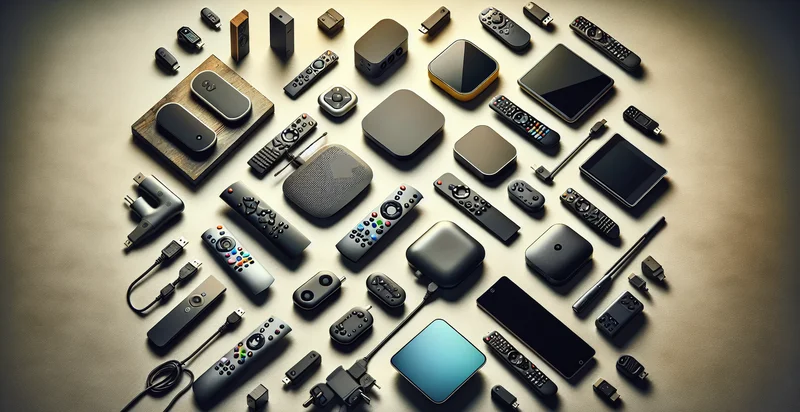Identify streaming device
using AI
Below is a free classifier to identify streaming device. Just upload your image, and our AI will predict what type of streaming device it is - in just seconds.

Contact us for API access
Or, use Nyckel to build highly-accurate custom classifiers in just minutes. No PhD required.
Get started
import nyckel
credentials = nyckel.Credentials("YOUR_CLIENT_ID", "YOUR_CLIENT_SECRET")
nyckel.invoke("streaming-device", "your_image_url", credentials)
fetch('https://www.nyckel.com/v1/functions/streaming-device/invoke', {
method: 'POST',
headers: {
'Authorization': 'Bearer ' + 'YOUR_BEARER_TOKEN',
'Content-Type': 'application/json',
},
body: JSON.stringify(
{"data": "your_image_url"}
)
})
.then(response => response.json())
.then(data => console.log(data));
curl -X POST \
-H "Content-Type: application/json" \
-H "Authorization: Bearer YOUR_BEARER_TOKEN" \
-d '{"data": "your_image_url"}' \
https://www.nyckel.com/v1/functions/streaming-device/invoke
How this classifier works
To start, upload your image. Our AI tool will then predict what type of streaming device it is.
This pretrained image model uses a Nyckel-created dataset and has 20 labels, including Amazon Fire Stick, Apple Tv, Apple Tv Plus, At&T Tv, Fubotv, Google Chromecast, Hulu Live Tv, Lg Smart Tv, Microsoft Xbox and Now Tv.
We'll also show a confidence score (the higher the number, the more confident the AI model is around what type of streaming device it is).
Whether you're just curious or building streaming device detection into your application, we hope our classifier proves helpful.
Related Classifiers
Need to identify streaming device at scale?
Get API or Zapier access to this classifier for free. It's perfect for:
- Smart Home Integration: The streaming device identifier can be utilized to enhance smart home ecosystems by ensuring seamless integration between various devices. By identifying the presence of compatible streaming devices, users can easily control their entertainment systems via smart home assistants, creating a more cohesive user experience.
- Personalized Content Recommendations: By classifying streaming devices, platforms can gather data on user preferences and viewing habits associated with specific devices. This information allows streaming services to tailor content recommendations more effectively, enhancing user engagement and satisfaction.
- Targeted Advertising: Advertising platforms can use the device classification to deliver targeted advertisements based on the type of streaming device being used. Different devices can represent different demographics or user behaviors, allowing advertisers to fine-tune their campaigns for maximum impact.
- Device-Specific Optimization: Streaming services can leverage the identifier to optimize their content delivery and streaming quality for specific devices. By understanding the capabilities and limitations of each device type, services can provide the best possible experience, minimizing buffering and maximizing resolution.
- Fraud Detection and Prevention: The classification function can help identify fraudulent or unauthorized usage of streaming accounts. By detecting unusual patterns associated with specific devices, service providers can enhance their security protocols to protect user accounts and reduce piracy.
- Market Analysis and Trends: Companies can use the streaming device classification to analyze market trends and user behavior across different device categories. This data can inform product development and marketing strategies, helping companies stay competitive in the rapidly evolving streaming market.
- Customer Support Optimization: Customer support teams can benefit from the identifier by streamlining troubleshooting processes. By quickly identifying the type of streaming device a customer is using, support agents can provide more accurate assistance, reducing resolution times and improving overall customer satisfaction.


